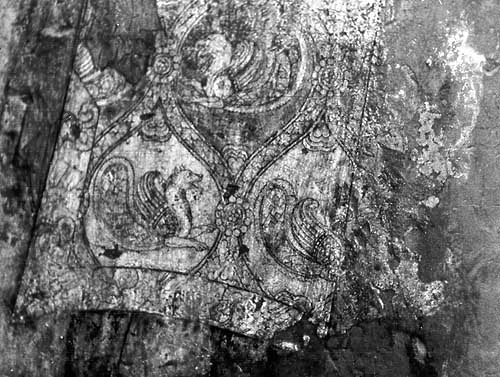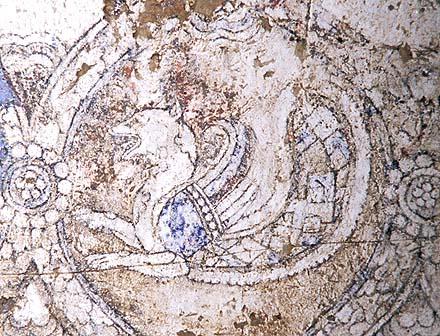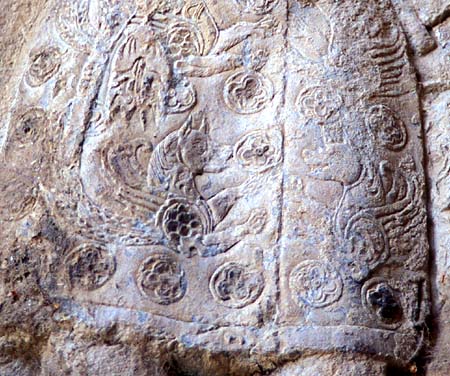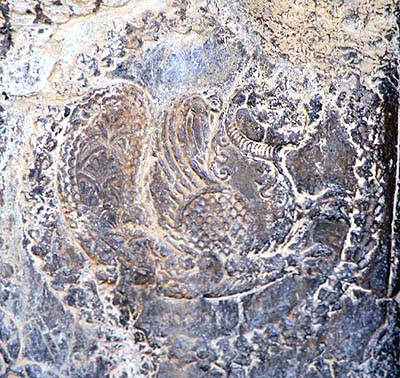
| Court art of Sogdian Samarqand in the 7th century AD | |||||||||||||
| Home | General | Western Wall | Northern Wall | Eastern Wall | Southern Wall | Bibliography | |||||||
 |
|
|||||||||||||||||||||||||||||||||||||||||||
Western wall
The following proposal for an identification of figure 4 is certainly only an attempt. As we have seen, group A2 of delegates seems to belong to nations of the west. A second hint comes from the clothes of figure 4. The delicate ornamentation depicts fabulous beasts known as "Senmurvs". Look below:
 |
Left: The Senmurvs are set into an overall pattern of curved rhomboids. |
| Right: Close-up of the garment of figure 4 |  |
Originally more than hundred human figures must have been depicted on the walls of our room. Many of these persons are dressed with richly ornamented and multicoloured clothes. But it seems noteworthy that the Senmurv is, in contrary to other patterns, only to meet with figure 4 on the western wall.
The reason for that must be the symbolic nature of the Senmurv. Speaking of this creature we concentrate only on the "dog-peackock" as depicted on the Afrasiab murals. Doubtless it originates from Iranian symbolism. The most spectacular examples can be seen on the late Sasanian rock reliefs of Taq-e Bustan (Iran):
 |
Left: Senmurvs as pattern on the caftan of a Sasanian king, Taq-e Bustan, Great Ivan, left wall. |
| Right: Senmurv in medaillon on the clothes of the heavy-armoured rider, Taq-e Bustan, Geat Ivan. |  |
Comparing these images with the Senmurvs from Afrasiab we notice a striking similarity.
Apparently the Senmurv in Sasanian iconography was a symbol with intimate connection to kingship. Images concentrate on representations of royal persons and on royal silverware. Only in post-Sasanian times, when dynastic restrictions were lost, the Senmurv spread wide as a merely ornamental motif on Near and Middle Eastern textiles, metalwork, and so on.
Concerning the Afrasiab murals we have a general date within the limits of the Sasanian dynasty (i.e., before 652), as we have tried to explain on another page.
Therefore, if the Senmurv (i.e., the "dog-peacock"!) was a Sasanian royal emblem, his appearance on the Afrasiab murals should point to the same symbolic value. In other words: The "owner" of the symbol should represent a Sasanian king.
Read next page on the identification of figure 4.
Back to previous page on the identification of figure 4.
Back to main text (western wall)
 |
|
|||||||||||||||||||||||||||||||||||||||||||